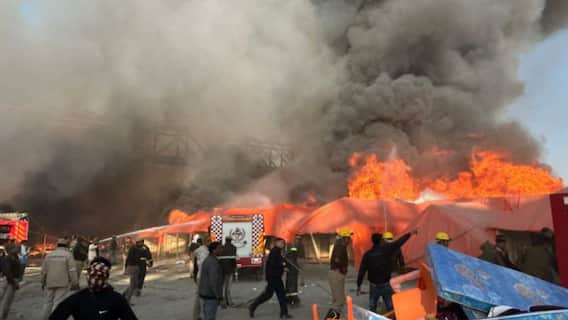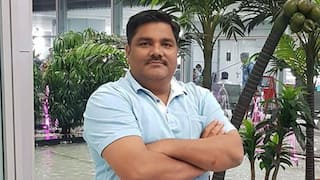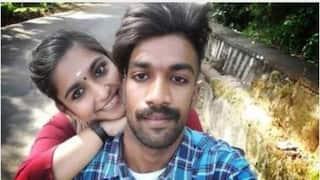Explorer
High Revenue Deficit Will Be Issue For New Maharashtra Government
The state government had implemented the Seventh Pay Commission for all its 20.5 lakh employees and pensioners from January 1, 2019, pushing up the state salary bill and the revenue expenditure, as per the state government budget for 2019-20.

The Sena-NCP-Congress government, set to take power on Thursday, will have to take steps to check the widening revenue deficit of India's second most politically important state.
New Delhi: The Sena-NCP-Congress government, set to take power on Thursday, will have to take steps to check the widening revenue deficit of India's second most politically important state. For 2019-20 (BE), revenue receipts have been estimated at Rs 3.15 lakh crore while revenue expenditure has been estimated at Rs 3.35 lakh crore. The state continues to estimate a revenue deficit for FY20 (BE) and it stands at Rs 20,293 crore. This is the only FRBM norm that has not been adhered to in the second successive year, according to rating agency CARE Ratings.
While most key macro stats are stable, the worrying factor is the widening revenue deficit. The state government continues to record a revenue deficit during FY20(BE) and was at Rs 20,293 crore, 35.6 per cent higher than a year ago. The revenue deficit of the state has widened by Rs 509 crore compared with the revenue deficit of the Interim Budget.
Maharashtra's loan burden is set to balloon to Rs 4.7 lakh crore in 2019-20, a 62 per cent jump in five years since 2014-15. Government liabilities stood at Rs 4.14 lakh crore in 2018-19 and are steadily mounting upwards. The state government had implemented the Seventh Pay Commission for all its 20.5 lakh employees and pensioners from January 1, 2019, pushing up the state salary bill and the revenue expenditure, as per the state government budget for 2019-20.
Revenue expenditure is an expenditure incurred by the government on its departments on various services, interest on debt, subsidies, etc. Broadly speaking, expenditure that does not result in creation of assets is treated as revenue expenditure.
Maharashtra is currently spending Rs 1.4 lakh crore on salaries, which is a 125 per cent jump from 2014-15 when the salary bill was Rs 62,123 crore. Just before the state elections in October 2019, the state cabinet cleared a proposal to implement the Seventh Pay Commission recommendations for municipal corporations, municipal councils and nagar panchayats in the state from September 1 which, according to then state Finance Minister Sudhir Mungantiwar, will cost Rs 409 crore.
Revenue expenditure has been budgeted at Rs 3.35 lakh crore for FY20 (BE), 11.1 per cent higher than a year ago. The budgetary announcements made on various expenditure has led to expanding the total revenue expenditure by Rs 660 crore compared with the Interim Budget.
Total receipts (excluding borrowings) for 2019-20 are estimated to be Rs 3,16,930 crore, an increase of 9.8 per cent as compared to the revised estimate of 2018-19. In 2018-19, total receipts (excluding borrowings) are estimated to be higher than the budgeted estimate by Rs 512 crore.
Revenue expenditure for 2019-20 is proposed to be Rs 3,34,933 crore, which is an increase of 11.1 per cent over the revised estimate of 2018-19. This expenditure includes payment of salaries, pensions, and interest, among others. Revenue expenditure accounts for 83 per cent of the total expenditure proposed for 2019-20.
CARE Ratings, on its state update has said: "The total committed expenditure of the government which includes salary, pension and interest is budgeted to be at Rs 1.87 lakh crore, 24 per cent higher than the revised estimate a year ago."
Committed expenditure (includes also subsidies) is at 59.4 per cent of the revenue receipts while it was higher at 62.6 per cent in FY15. Capital expenditure estimated at Rs 43,667 crore in FY20(BE) accounts for 10.3 per cent of the total budget size, and has seen an increase of Rs 928 crs compared with the Interim Budget. The capital expenditure has grown by less than 1 per cent (0.8 per cent) in FY20(BE) compared with the revised estimates of the previous year.
The revenue receipts for FY20 (BE) has been estimated at Rs. 3.15 lakh crore, 9.8 per cent higher than the revised estimate of FY19. The revenue receipts have been budgeted higher by Rs 151 crore than the Interim Budget 2019-20. Out of the total revenue, the state's own tax revenue accounts for 52.1 per cent, followed by internal debt (18.9 per cent) and share in central taxes (11.5 per cent). A higher share of state's own tax revenue indicates that the state has been self-reliant.
There hasn't been a change in the outstanding debt of the Maharashtra government and it is at Rs. 4.72 lakh crore for FY20(BE). The outstanding debt of the government rose by 13.8 per cent over the revised estimates of the previous year. The outstanding debt is 15.8 per cent of GSDP duirng FY20(BE). The outstanding debt has seen a sustained increase during the last 4 years, CARE said.
The state has budgeted a fiscal deficit of Rs 61,670 crore during FY20(BE) which is 2.07 per cent of GSDP which is higher than 1.92 per cent budgeted for FY20(BE) in the Interim Budet. The ratio of fiscal deficit to GSDP which had declined to less than 1 per cent (0.96 per cent) during FY18 but had increased to 2 per cent based on the revised estimates of FY19 (RE). Since FY11, the state has adhered to the fiscal consolidation norms and maintained fiscal deficit below the 3 per cent of GSDP.
Follow Breaking News on ABP Live for more latest stories and trending topics. Watch breaking news and top headlines online on ABP News LIVE TV
View More
Advertisement
Trending News
Advertisement
Advertisement
Top Headlines
Cities
Cities
Election 2025
Cities
Advertisement


Sayantan Ghosh
Opinion






































